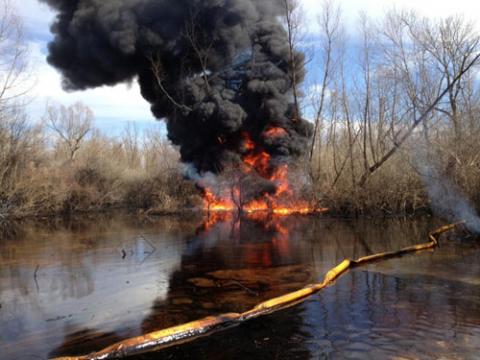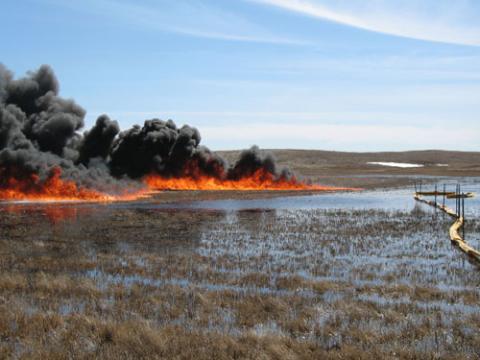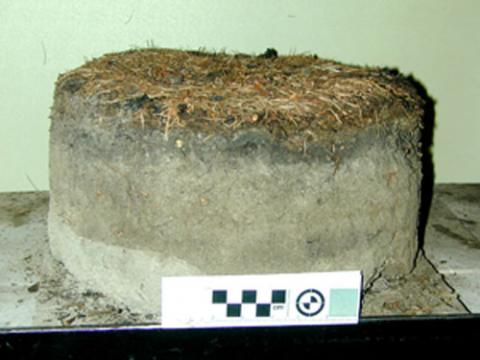Soil heating and fire effects resulting from in situ oil spill burning.
When petroleum is spilled on land, clean up can be difficult. Sites may be inaccessible to mechanical containment, recovery, and clean up, and the equipment may cause environmental damage. In situ burning may be a valuable alternative for removing spilled petroleum from land.
Although in situ burning of spilled oil may be a useful tool, its effects on vegetative communities and long-term site recovery are important concerns. Burning oil may produce temperatures that heat soils. This soil heating may affect the soil’s ability to supply water and nutrient needed by plants. This study investigates the effects of burning petroleum fuel oil (diesel) and crude oil on soils. Laboratory burning of soil monoliths (vertical slices of undisturbed soil ) was conducted at three soil moisture levels. Results from this study will improve understanding of the soil temperature distribution during burning and corresponding effects on soil respiration.


